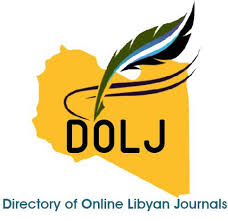The effect of treadmill training in children with Cerebral Palsy: A Systematic Review of Randomised controlled trials
DOI:
https://doi.org/10.54361/ljmr.12.1.03Keywords:
Foot Position, Knee Moment, Sit To StandAbstract
This study aims to investigate the effect of treadmill training on gross motor skills and gait parameters in children with Cerebral palsy.A review of Randomised controlled trials was performed usingPreferred Reporting Items for Systematic Reviews and Meta-Analyses (PRISMA) methodology. Six databases Embase, AMED, Medline, CINAHL, PEDro and Web of Science were searched. Data were extracted and assessed using Cochrane Collaboration’s tool and PEDro scale. Four studies were included, with a total of 100 participants. The risk of bias across studies was considered low in most domains. The studies received a score ranged from four to eight on PEDro scale. Two studies reported a statistically significant improvement of gross motor skills. Gait speed improved statistically after treadmill training in one trial. No serious adverse effects of treadmill training were reported. The results provide limited evidence on the positive effect of treadmill training on motor development and gait parameters. Further research should confirm this improvement and the size of it clinically also the long-term effects
Downloads
References
Stanley FJ, Blair E, Alberman E. (2000)What are the cerebral palsies? In: Cerebral palsies: epidemiology and causal pathways. London: MacKeith Press; p. 8-13.
Campbell SK. (1999) Decision making in pediatric neurologic physical therapy. Philadelphia: Churchill Livingstone.
Odding E, Roebroeck ME, Stam HJ. (2006) The epidemiology of cerebral palsy: incidence, impairments and risk factors. Disabil Rehabil. 28(4):183-191.
Oskoui M, Coutinho F, Dykeman J, et al. (2013)An update on the prevalence of cerebral palsy: a systematic review and meta-analysis. Dev Med Child Neurol. 55(6):509–519.
Rosenbaum P, Paneth N, Leviton A, et al. (2007) A report: the definition and classification of cerebral palsy April 2006. Dev Med Child Neurol. 109:108.
SCPE. (2000) Surveillance of cerebral palsy in Europe: a collaboration of cerebral palsy surveys and registers. Surveillance of Cerebral Palsy in Europe (SCPE). Dev Med Child Neurol.42:816–824.
Levitt S, editor. (2010) Treatment of cerebral palsy and motor delay. 5thed. Oxford: Wiley-Blackwell.
Christensen D, Van Naarden Braun K, Doernberg NS, et al. (2013) Prevalence of cerebral palsy, co-occurring autism spectrum disorders, and motor functioning - Autism and Developmental Disabilities Monitoring Network, USA, 2008. Dev Med Child Neurol. 56(1):59-65.
van Schie PE, Siebes RC, Dallmeijer AJ, et al. (2013) Development of social functioning and communication in school-aged (5–9 years) children with cerebral palsy. Res Dev Disabil. 34(12),4485–4494.
Martin L, Baker R, Harvey A. (2010) A systematic review of common physiotherapy interventions in school-aged children with cerebral palsy. Phys Occup Ther Pediatr. Nov;30(4):294-312.
Carr J, Shepherd R. (2010) Neurological rehabilitation: Optimizing motor performance. London: Churchill Livingstone.
Damiano DL, DeJong SL. (2009)A Systematic Review of the Effectiveness of Treadmill Training and Body Weight Support in Pediatric Rehabilitation. J Neurol Phys Ther. 33(1):27–44.
Kurz, MJ, Wilson, TW, Corr, B, et al. (2012) Body weight supported treadmill training influences the neuromagnetic activity of the somatosensory cortices of children with cerebral palsy. J Neurol Phys Ther. 36(4):166–172.
Kurz MJ, Stuberg W, Dejong S, et al. (2013) Overground body-weight-supported gait training for children and youth with neuromuscular impairments. Phys Occup Ther Pediatr. Aug;33(3):353-365.
Willoughby KL, Dodd KJ, Shields N. (2009) A systematic review of the effectiveness of treadmill training for children with cerebral palsy. Disabil Rehabil. 31(24):1971-1979.
Borggraefe I, Schaefer JS, Klaiber M, et al. (2010a) Robotic-assisted treadmill therapy improves walking and standing performance in children and adolescents with cerebral palsy. Eur J Paediatr Neurol. 14:496–502.
Mattern-Baxter K, McNeil S, Mansoor JK. (2013) Effects of home-based locomotor treadmill training on gross motor function in young children with cerebral palsy: a quasi-randomized controlled trial. Arch Phys Med Rehabil. 94(11):2061-2067.
Matsuno VM, Camargo MR, Palma GC, et al. (2010) Analysis of partial body weight support during treadmill and overground walking of children with cerebral palsy. Braz J Phys Ther. 14(5):404-410
Dobkin BH, Duncan PW. (2012) Should Body Weight–Supported Treadmill Training and Robotic-Assistive Steppers for Locomotor Training Trot Back to the Starting Gate?. Neurorehabil Neural Repair. 26(4):308–317.
Moher D, Liberati A, Tetzlaff J, et al. (2009) Preferred reporting items for systematic reviews and meta-analyses: the PRISMA statement. Ann Intern Med. 151(4):264-269.
Jewell DV. (2011) Guide to evidence-based physical therapist practice. 2nd ed. Sudbury, MA: Jones & Bartlett Learning.
The Nordic Cochrane Centre, The Cochrane Collaboration. (2012) Review Manager (RevMan). 5.2. Copenhagen: The Nordic Cochrane Centre, The Cochrane Collaboration.
Centre for Reviews and Dissemination (CRD). (2009) Systematic Reviews: CRD's guidance for undertaking systematic reviews in health care. CRD: University of York.
Higgins JPT, Green S, editors.(2011) Cochrane handbook for systematic reviews of intervention. Version 5.1.0. The Cochrane Collaboration. Available at: www.cochrane-handbook.org. Accessed: 9 Jan 2014.
De Morton NA. (2009) The PEDro scale is a valid measure of the methodological quality of clinical trials: a demographic study. Aust J Physiother. 55(2):129-133.
Maher CG, Sherrington C, Herbert RD, et al. (2003) Reliability of the PEDro scale for rating quality of randomized controlled trials. Phys Ther. Aug;83(8):713-721.
Wilson DB. Practical meta-analysis effect size calculator [Online calculator]. Retrieved 2017 May 1. Available from: https://www.campbellcollaboration.org/this-is-a-web-based-effect-size-calculator/explore/this-is-a-web-based-effect-size-calculator
Bryant E, Pountney T, Williams H, et al. (2013) Can a six-week exercise intervention improve gross motor function for non-ambulant children with cerebral palsy? A pilot randomized controlled trial. Clin Rehabil. 27(2):150–159.
Johnston TE, Watson KE, Ross SA, et al. (2011) Effects of a supported speed treadmill training exercise program on impairment and function for children with cerebral palsy. Dev Med Child Neurol. 53(8):742-750.
Chrysagis N, Skordilis EK, Stavrou N, et al. (2012) The effect of treadmill training on gross motor function and walking speed in ambulatory adolescents with cerebral palsy: a randomized controlled trial. Am J Phys Med Rehabil.91:747-760.
Su IY, Chung KK, Chow DH. (2013) Treadmill training with partial body weight support compared with conventional gait training for low-functioning children and adolescents with nonspastic cerebral palsy: a two-period crossover study. Prosthet Orthot Int. 37(6):445-453.
Cohen, J. (1988a)Statistical power analysis for the behavioral sciences (2nd ed.). Hillsdale, NJ: Erlbaum.
Prel Jd, Hommel G, Röhrig B, et al. (2009) Confidence Interval or P-Value? Part 4 of a Series on Evaluation of Scientific Publications. Dtsch Arztebl Int. 106(19):335-339.
Mattern-Baxter K. (2009) Effects of partial body weight supported treadmill training on children with cerebral palsy. Pediatr Phys Ther. 21(1):12-22.
Mutlu A, Krosschell K, Spira DG. (2009) Treadmill training with partial body-weight support in children with cerebral palsy: a systematic review. Dev Med Child Neurol. 51(4):268-275.
Valentin-Gudiol M, Mattern-Baxter K, Girabent-Farrés M, et al. (2011) Treadmill interventions with partial body weight support in children under six years of age at risk of neuromotor delay. Cochrane Database Syst Rev. Dec 7;(12):CD009242.
Valentin-Gudiol M, Bagur-Calafat C, Girabent-Farrés M, et al. (2013) Treadmill interventions with partial body weight support in children under six years of age at risk of neuromotor delay: a report of a Cochrane systematic review and meta-analysis. Eur J Phys Rehabil Med. 49(1):67-91.
Grecco LAC, Tomita SM, Christovão TCL, et al. (2013) Effect of treadmill gait training on static and functional balance in children with cerebral palsy: a randomized controlled trial. Braz J Phys Ther. 17(1):17-23.
Borggraefe I, Klaiber M, Schuler T, et al. (2010b) Safety of robotic-assisted treadmill therapy in children and adolescents with gait impairment: A bi-centre survey. Dev Neurorehabil. 13(2):114-119.
Downloads
Published
Issue
Section
License
Copyright (c) 2018 Ahlam A. Zidan, Husam M. Belhaj, Osama N. Aljahmi (Author)

This work is licensed under a Creative Commons Attribution-NonCommercial-NoDerivatives 4.0 International License.
Open Access Policy
Libyan journal of medical Research (LJMR).is an open journal, therefore there are no fees required for downloading any publication from the journal website by authors, readers, and institution.
The journal applies the license of CC BY (a Creative Commons Attribution 4.0 International license). This license allows authors to keep ownership f the copyright of their papers. But this license permits any user to download , print out, extract, reuse, archive, and distribute the article, so long as appropriate credit is given to the authors and the source of the work.
The license ensures that the article will be available as widely as possible and that the article can be included in any scientific archive.
Editorial Policy
The publication of an article in a peer reviewed journal is an essential model for Libyan journal of medical Research (LJMR). It is necessary to agree upon standards of expected ethical behavior for all parties involved in the act of publishing: the author, the journal editorial, the peer reviewer and the publisher.
Any manuscript or substantial parts of it, submitted to the journal must not be under consideration by any other journal. In general, the manuscript should not have already been published in any journal or other citable form, although it may have been deposited on a preprint server. Authors are required to ensure that no material submitted as part of a manuscript infringes existing copyrights, or the rights of a third party.
Authorship Policy
The manuscript authorship should be limited to those who have made a significant contribution and intellectual input to the research submitted to the journal, including design, performance, interpretation of the reported study, and writing the manuscript. All those who have made significant contributions should be listed as co-authors.
Others who have participated in certain substantive aspects of the manuscript but without intellectual input should only be recognized in the acknowledgements section of the manuscript. Also, one of the authors should be selected as the corresponding author to communicate with the journal and approve the final version of the manuscript for publication in the LJMR.
Peer-review Policy
- All the manuscripts submitted to LJMR will be subjected to the double-blinded peer-review process;
- The manuscript will be reviewed by two suitable experts in the respective subject area.
- Reports of all the reviewers will be considered while deciding on acceptance/revision or rejection of a manuscript.
- Editor-In-Chief will make the final decision, based on the reviewer’s comments.
- Editor-In-Chief can ask one or more advisory board members for their suggestions upon a manuscript, before making the final decision.
- Associate editor and review editors provide administrative support to maintain the integrity of the peer-review process.
- In case, authors challenge the editor’s negative decision with suitable arguments, the manuscript can be sent to one more reviewer and the final decision will be made based upon his recommendations.











